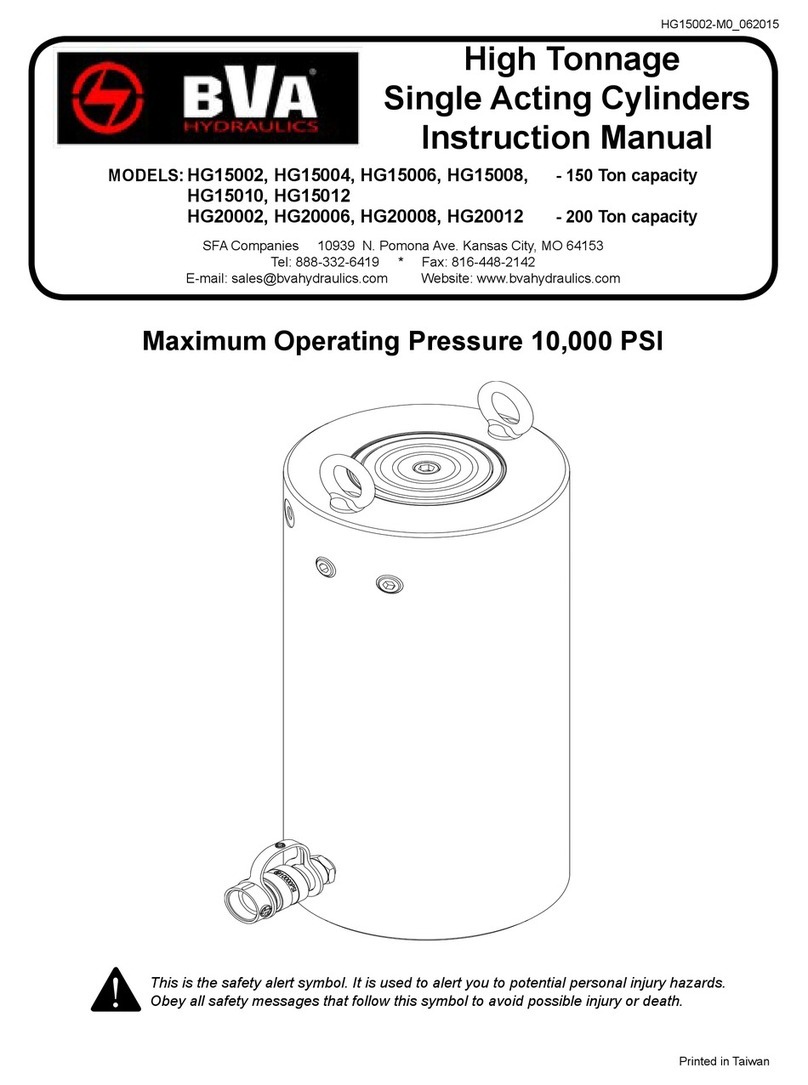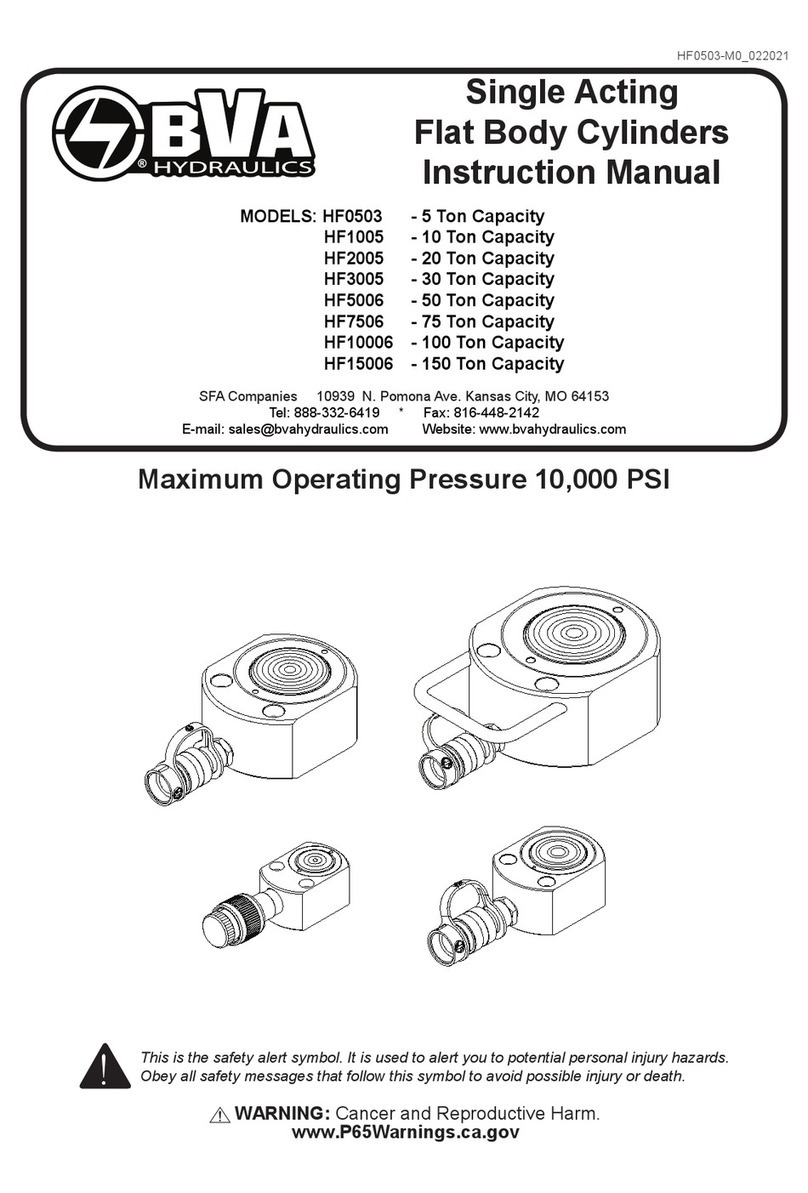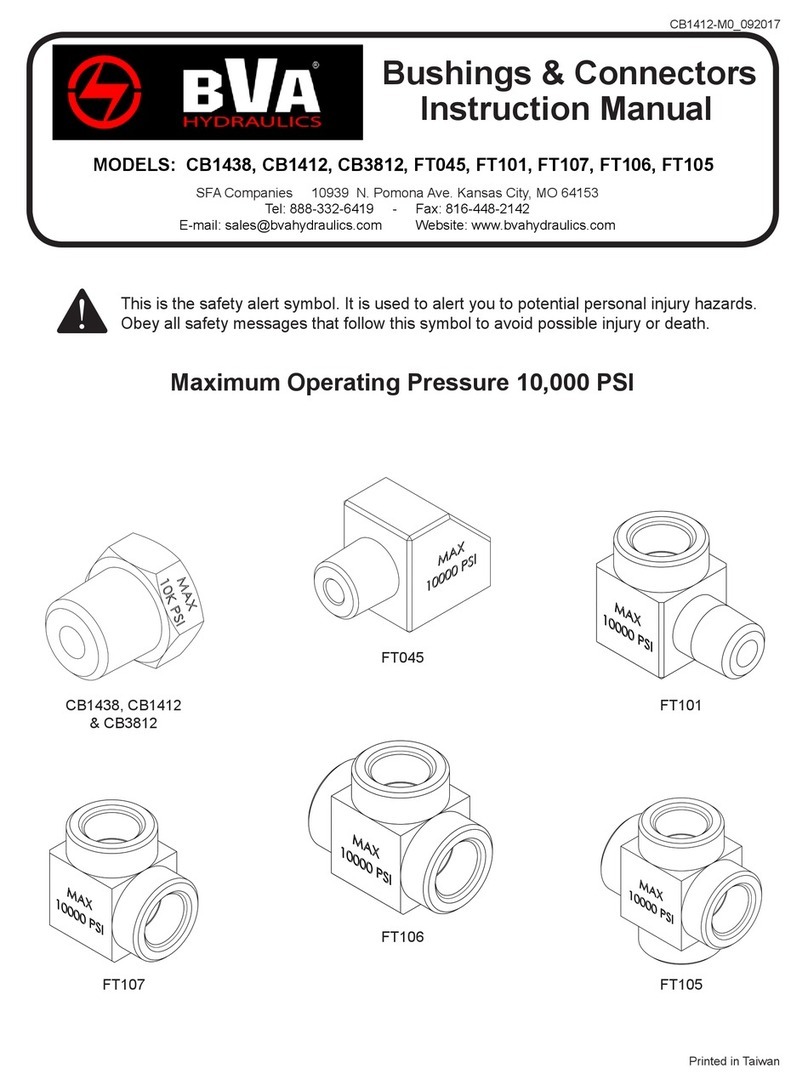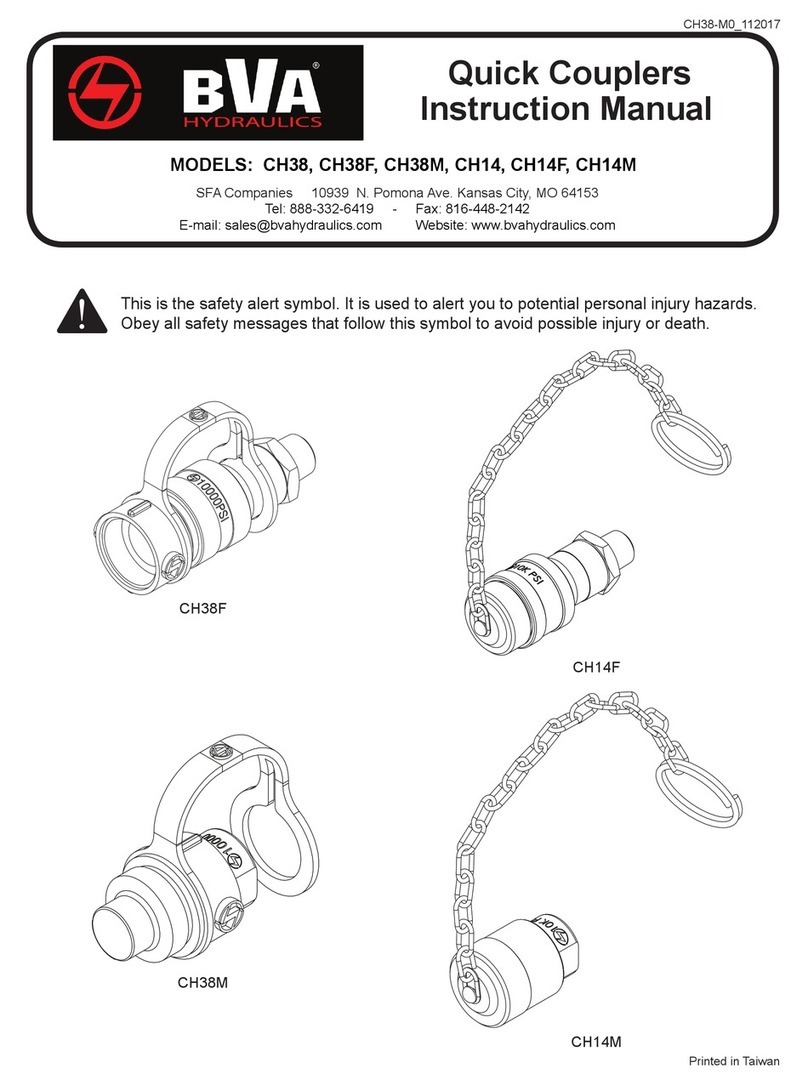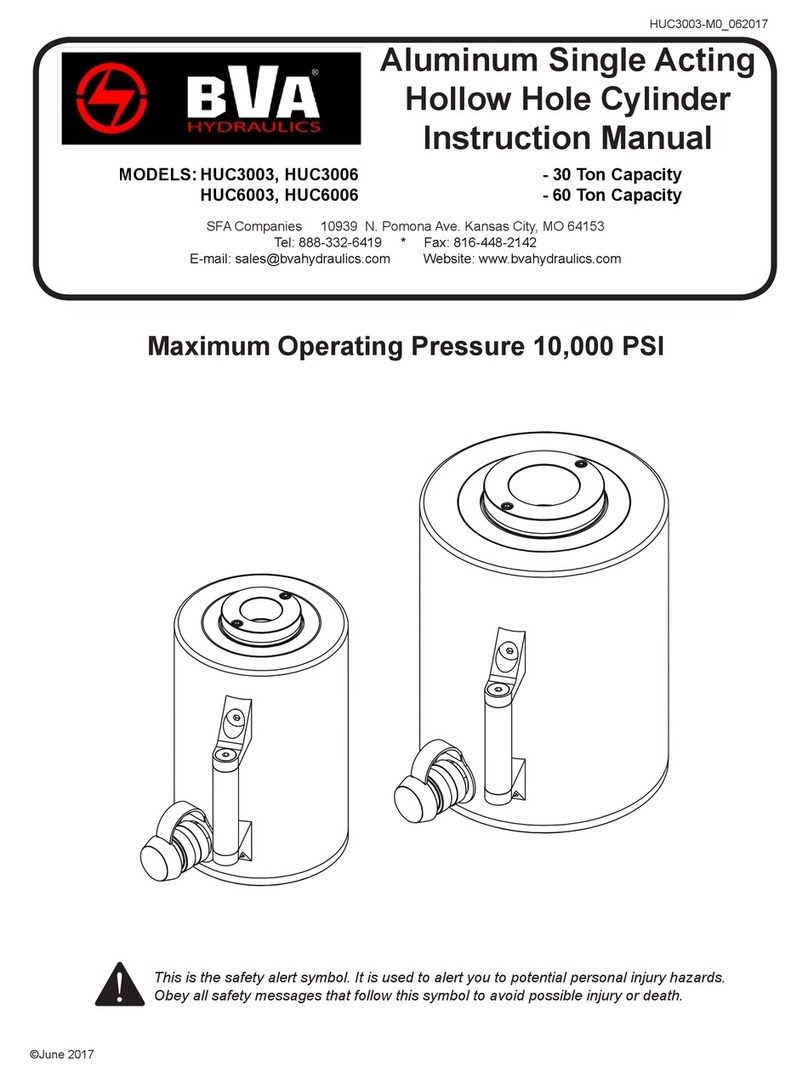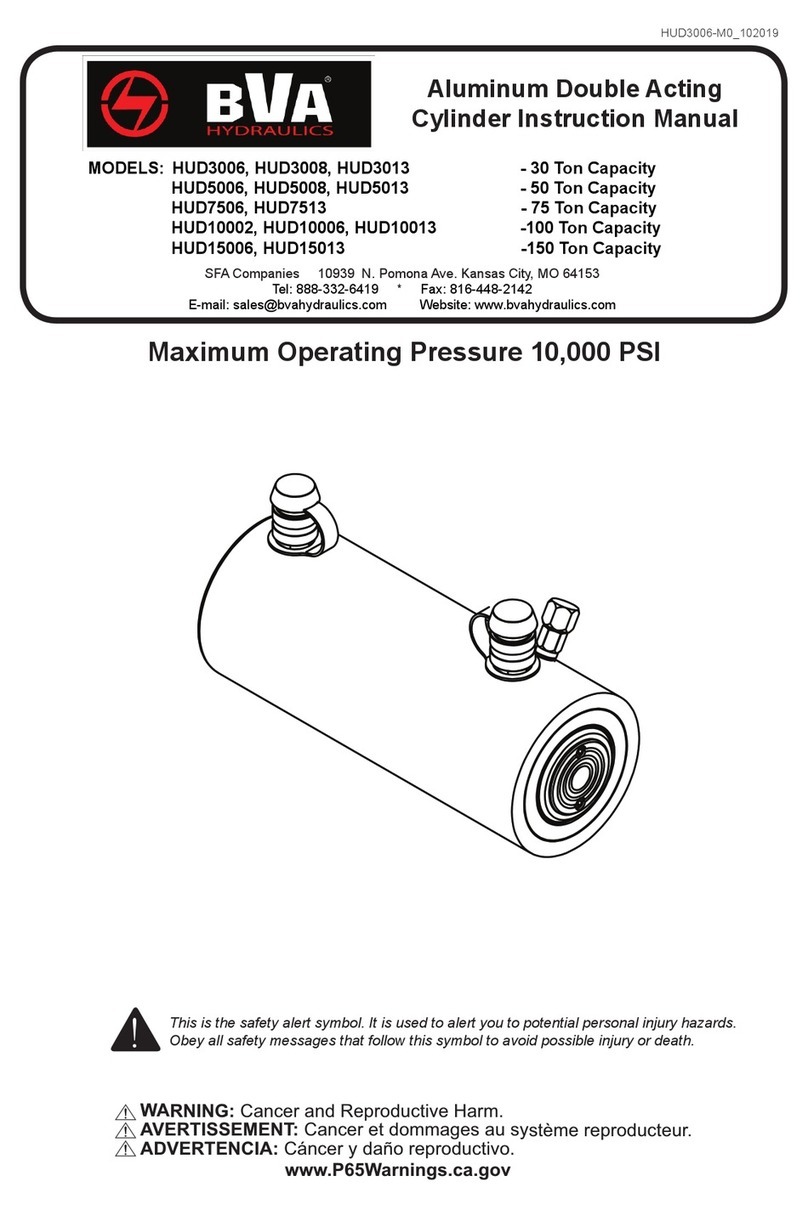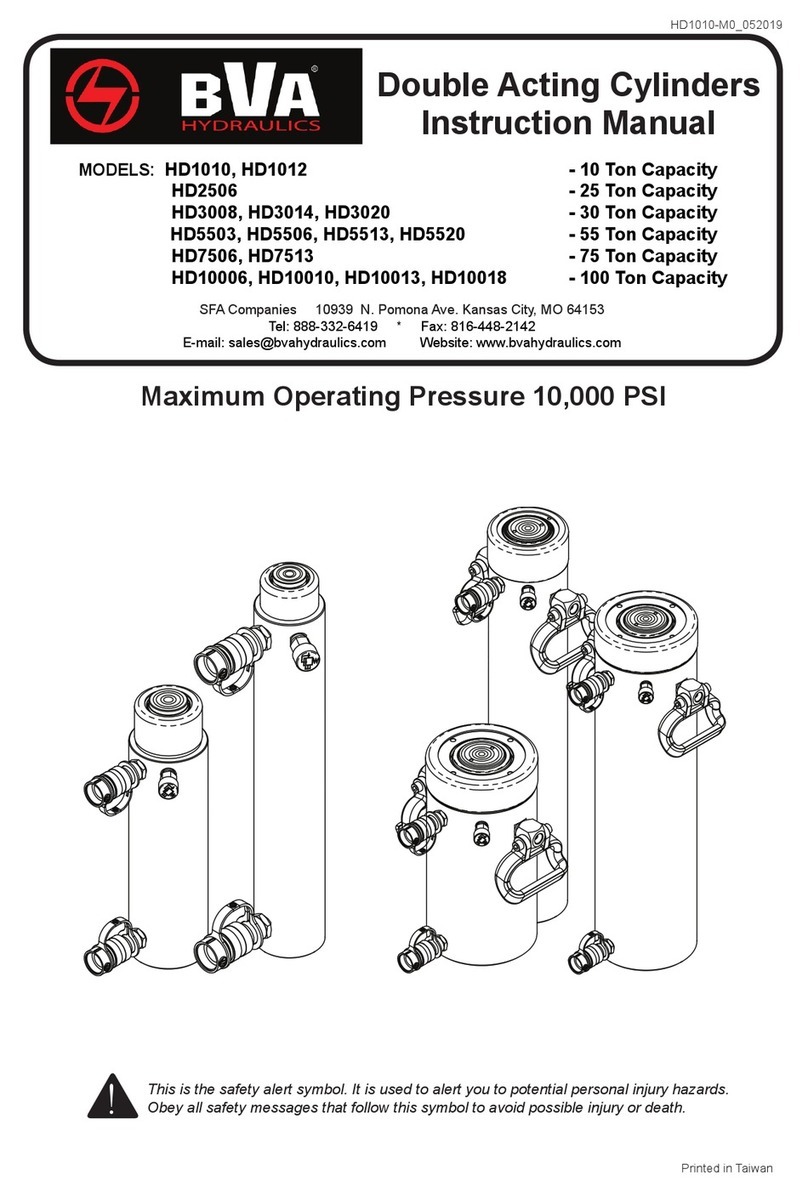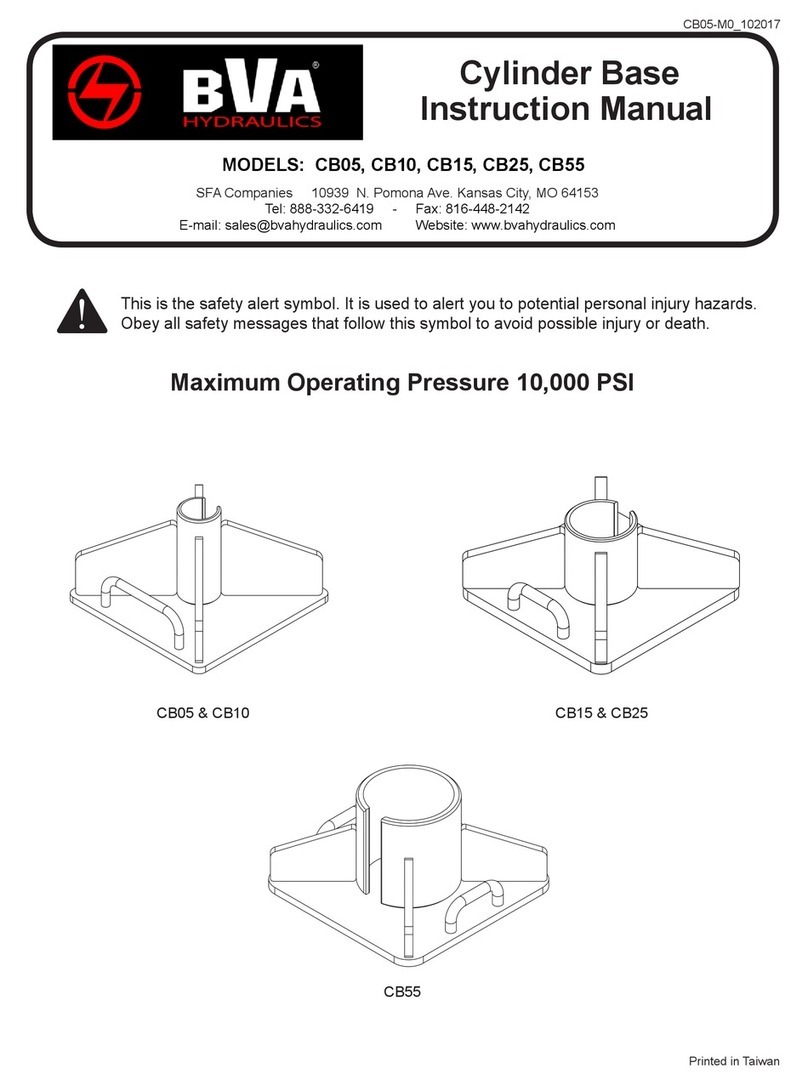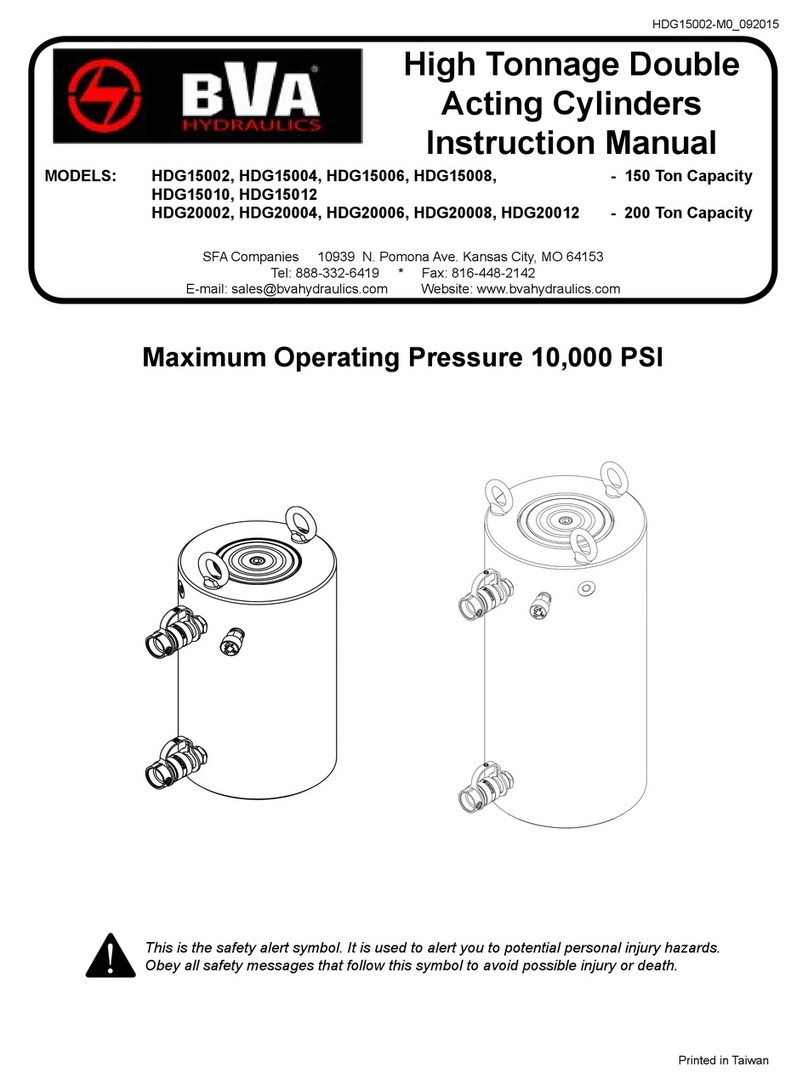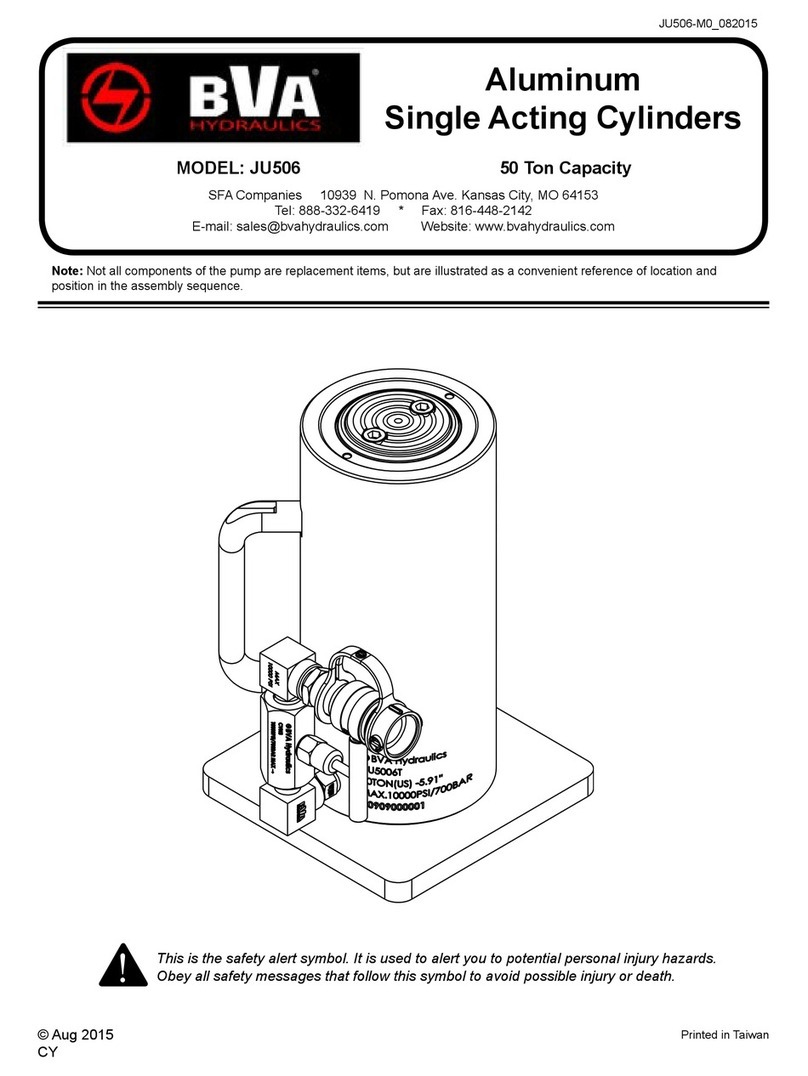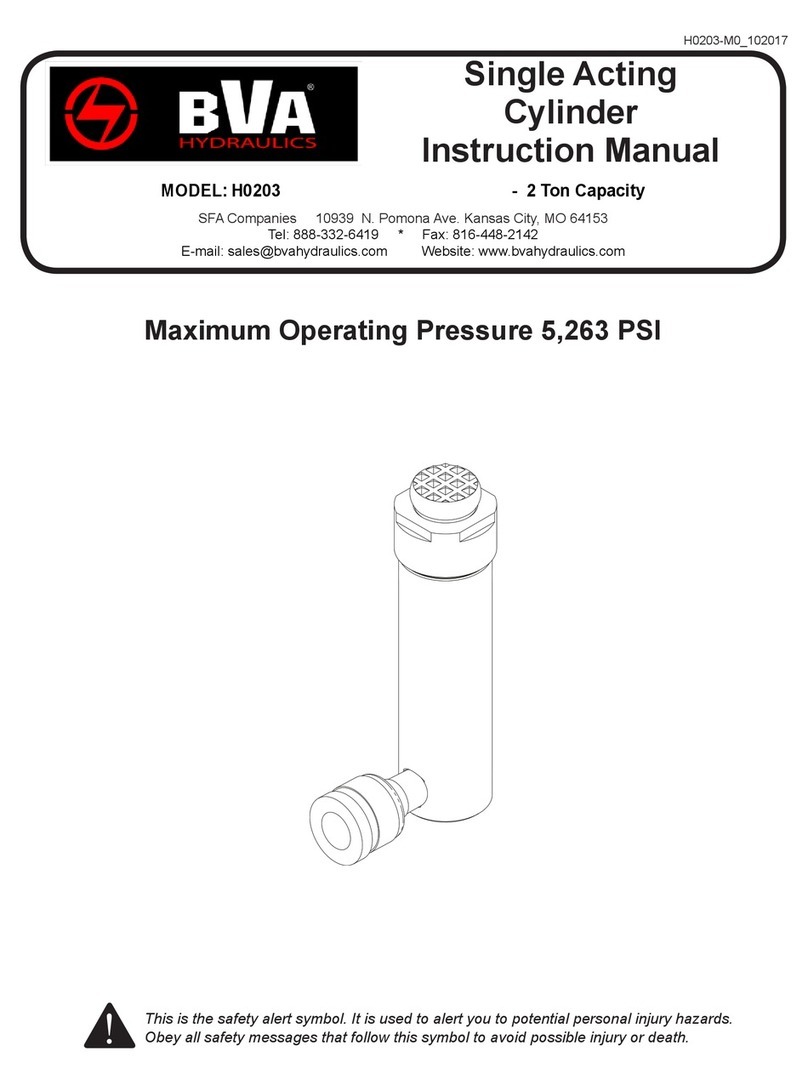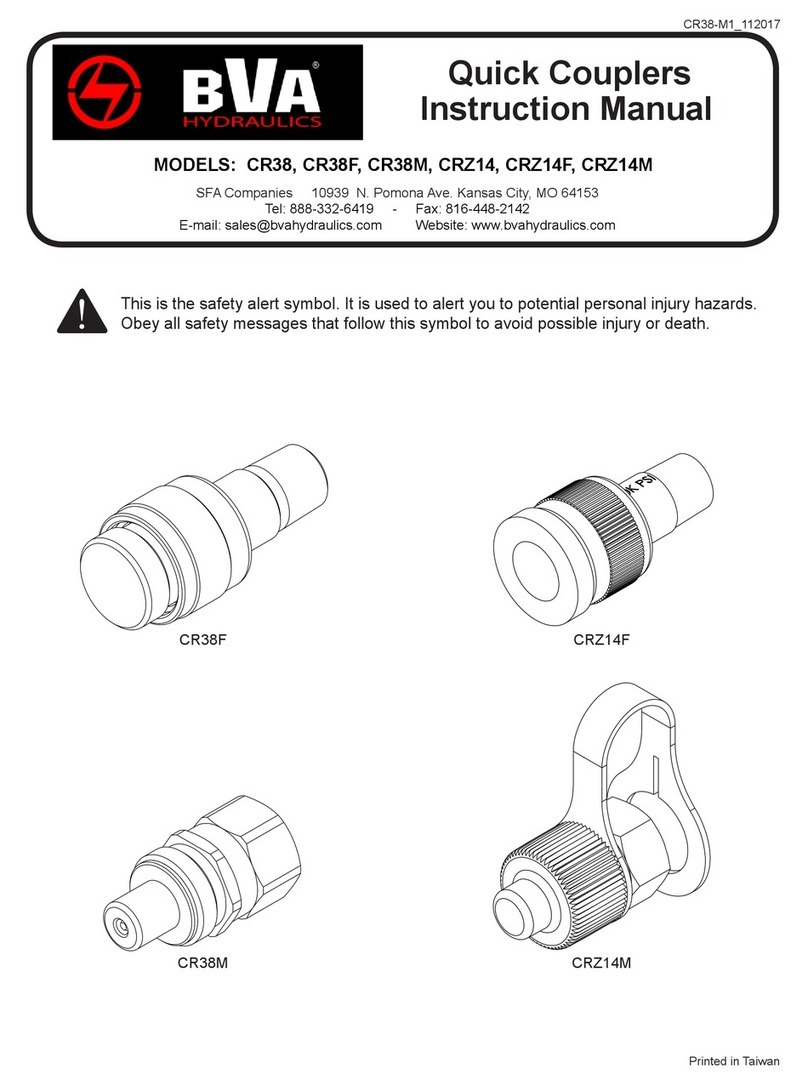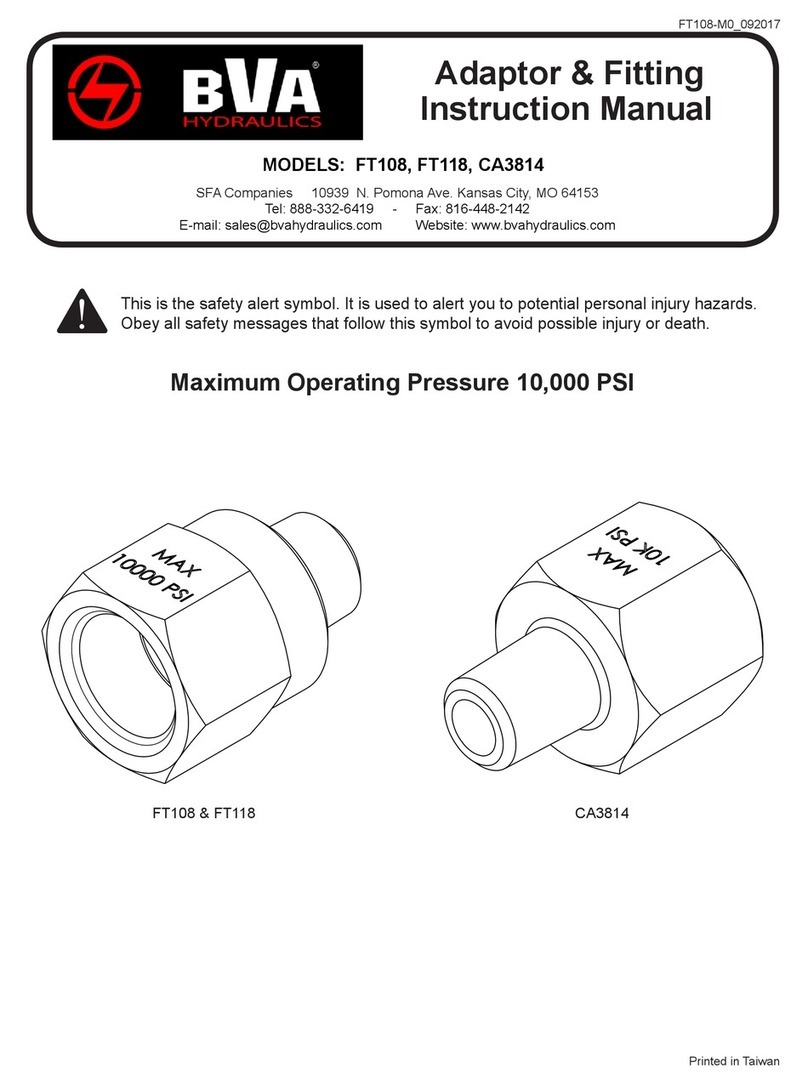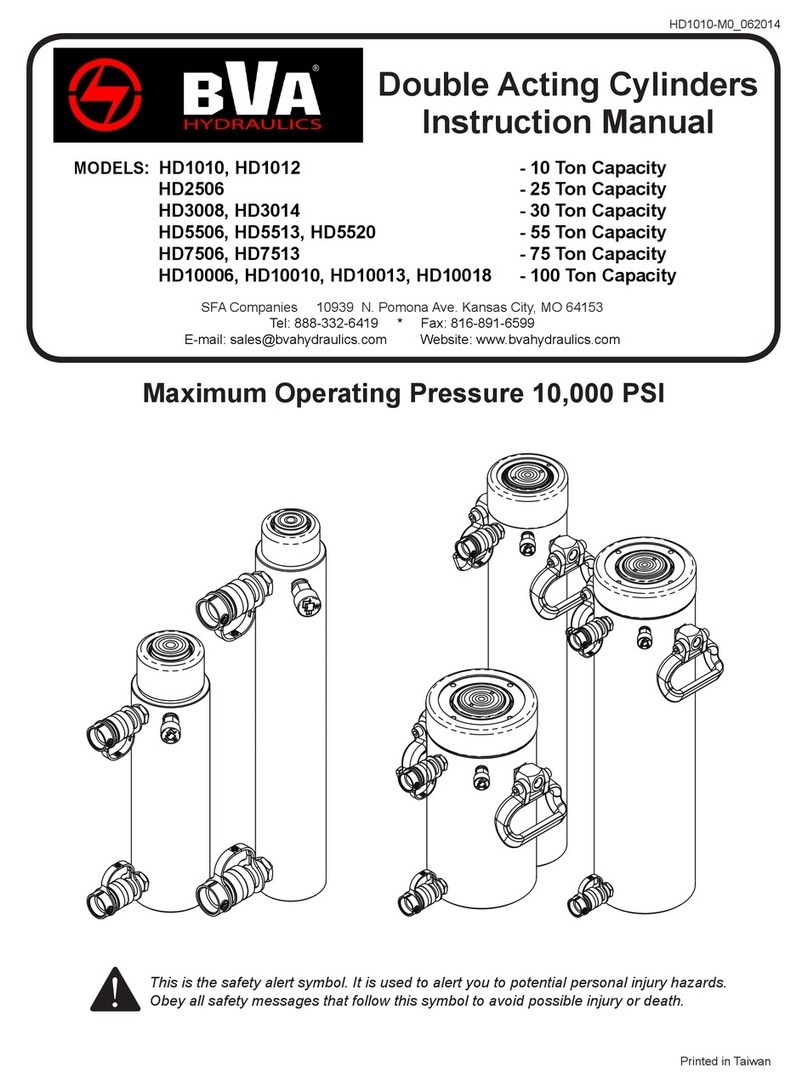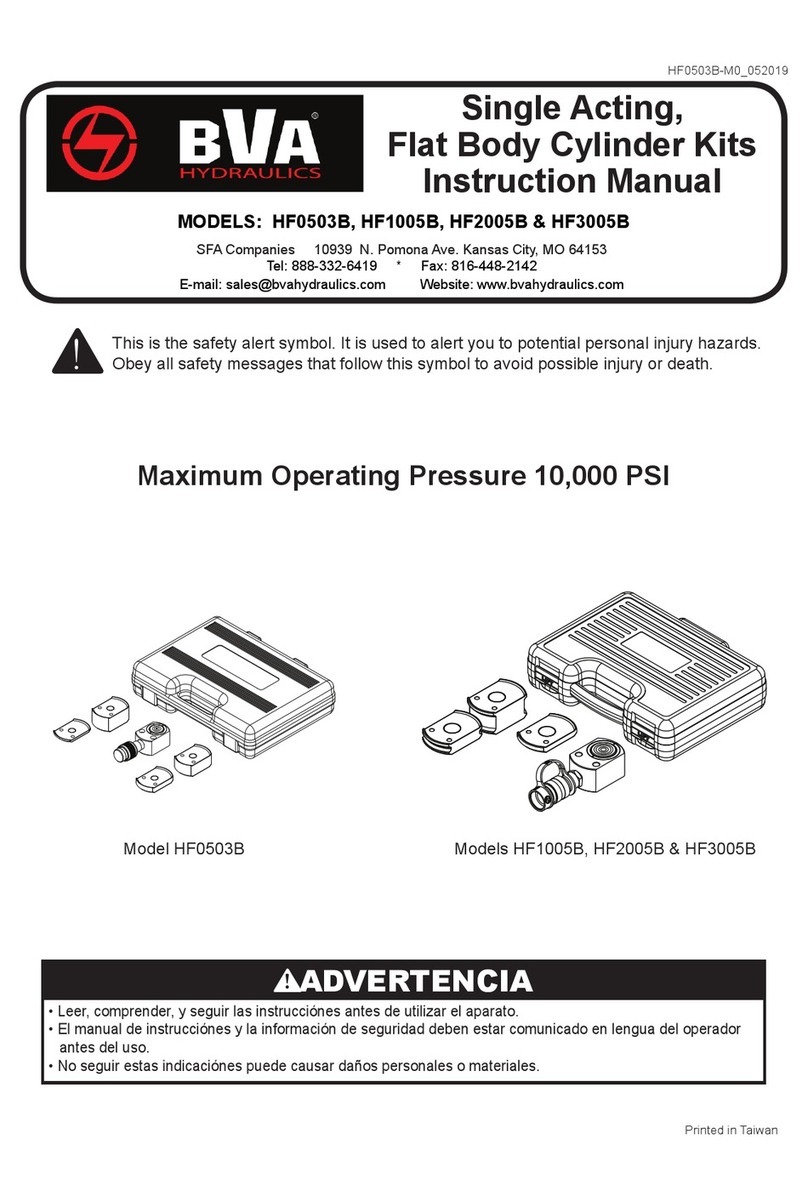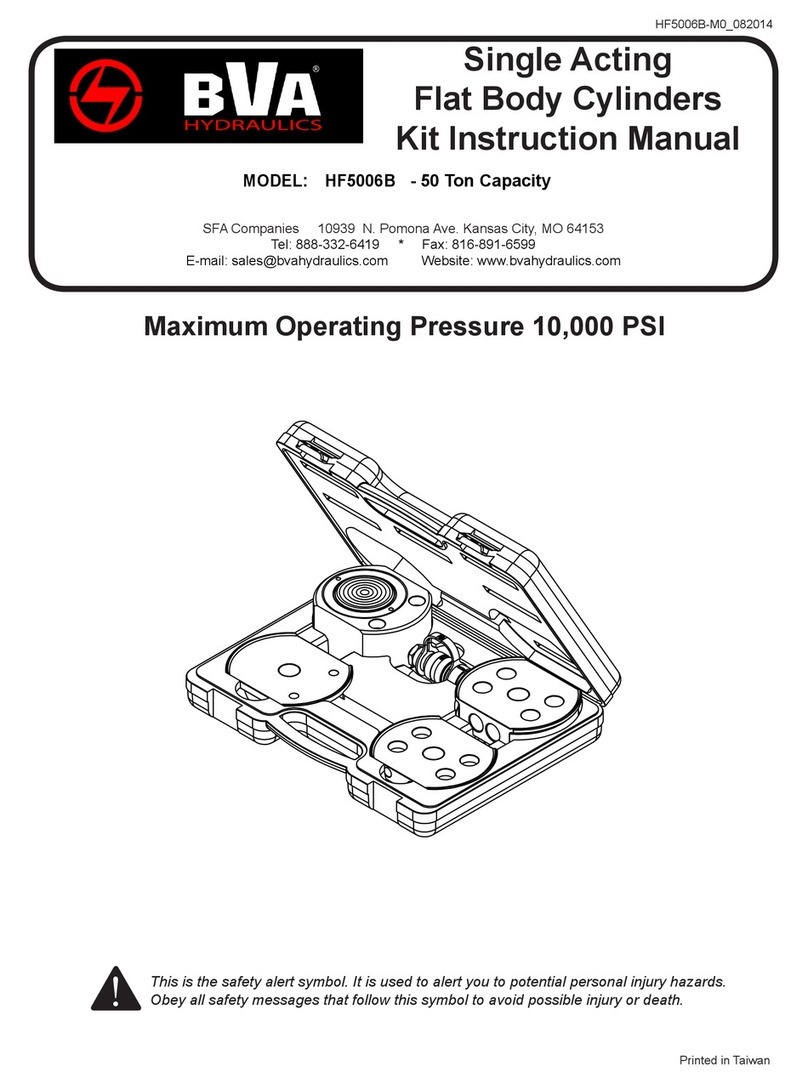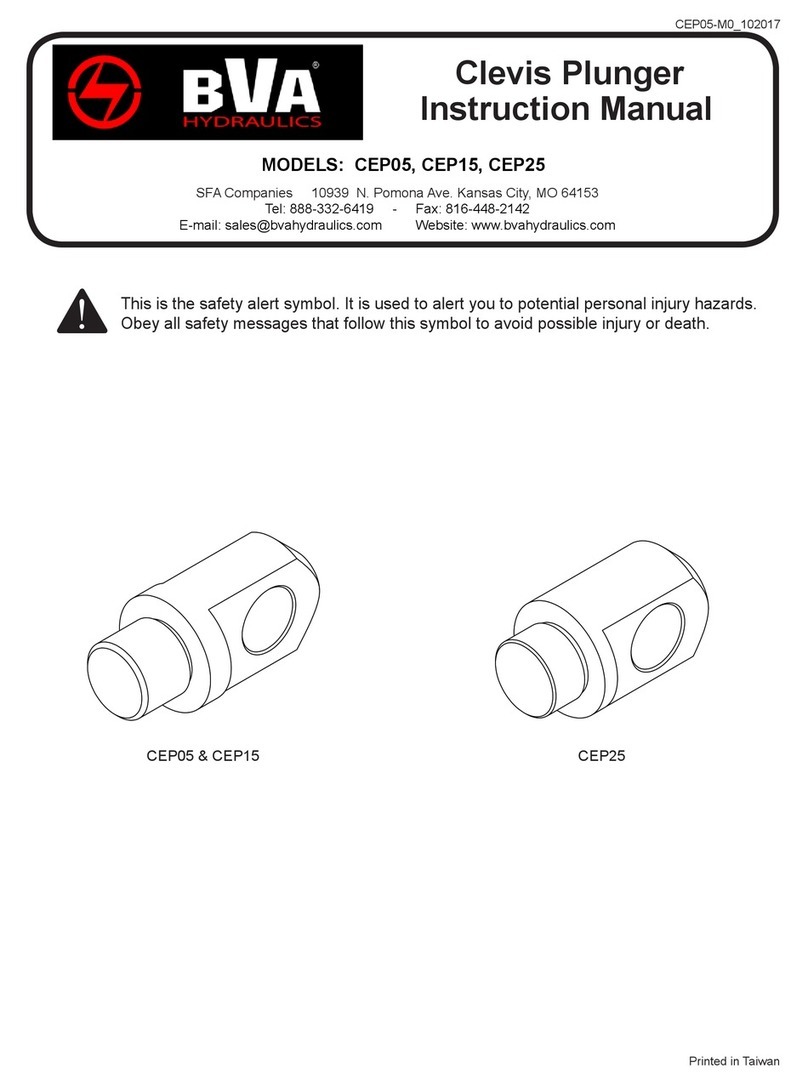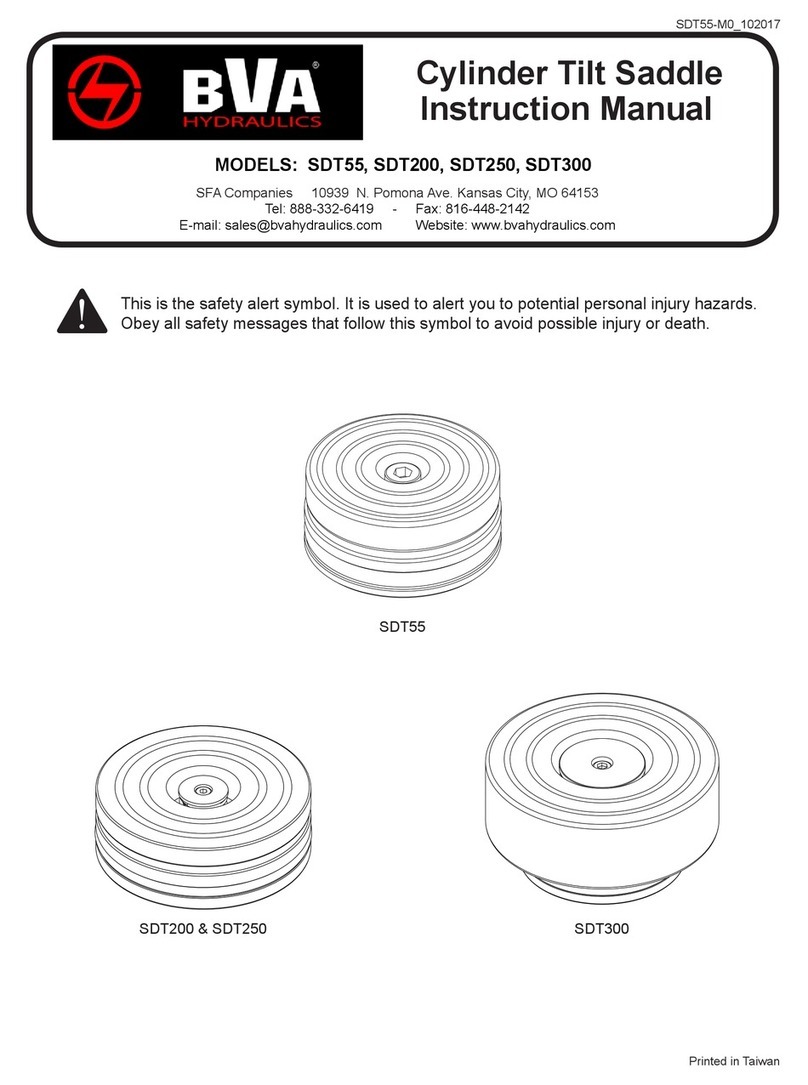
BEFORE USE
1. Before using this product, read the owner's manual
completely and familiarize yourself thoroughly with the
product, its components and recognize the hazards
associated with its use.
2. Verify that the product and the application are compatible.
If in doubt, call BVA Hydraulics Technical Service (888)
332-6419.
3. Inspect before each use. Do not use if bent, broken, leaking
or damaged components are noted.
4.
Replace worn or damaged parts and assemblies with BVA
Hydraulics authorized replacement parts only. Lubricate
as instructed in Maintenance Section.
5. Ensure method of confirming load is accurate and working
properly. Have gauge or load cell accuracy verified by
qualified personnel on a yearly basis.
OPERATION
Operate the hydraulic pump to retract and advance the
cylinder. Do not continue pumping when cylinder is fully
retracted. Internal pressure will build up and may damage
the seal of the cylinder.
To help prevent material fatigue if the cylinder is to
be used in a continuous application, the load should
not exceed 85% of the rated capacity.
Your cylinder, hose(s), couplings and pump all must
be rated for the same maximum operating pressure,
correctly connected and compatible with the hydraulic fluid
used. An improperly matched system can cause the system
to fail.
All personnel must be clear before lowering load
MAINTENANCE
1. Inspect hoses and connections daily. Replace damaged
components immediately with BVA Hydraulics Replacement
Parts only.
2. Tighten connections as needed. Use pipe thread sealing
compound when servicing connections.
3. Always use clean, approved hydraulic fluid and change as
recommended or sooner if the fluid becomes contaminated
(never exceed 400 hours). Follow pump manufacturers
instructions for changing and adding hydraulic fluid. Use
only good quality hydraulic fluid. We recommend Mobil
DTE13M or equivalent when using with hand pump or air
pump; BVA Hydraulics Oil (F01) or equivalent when using
with electric pump. Never use brake fluid, transmission
fluid, turbine oil, motor oil, alcohol, glycerin etc. Use of
other than good quality hydraulic oil will void warranty and
damage the cylinder, pump, hose etc.
4.
Use an approved, high-grade pipe thread sealant to seal all
hydraulic connections. Teflon tape can be used if only one
layer of tape is used and it is applied carefully (two threads
back) to prevent the tape from being introduced into hydraulic
system. A piece of tape could travel through the system and
obstruct the flow of fluid and adversely affect function.
Figure 2 - Illustration to bleed air from system
Lubrication & Cleaning
Keep cylinder clean at all times.
1. Any exposed threads (male or female) must be cleaned
and lubricated regularly, and protected from damage.
Lubricate with light machine oil.
2. If a cylinder or ram has been exposed to rain, snow,
sand, airborne abrasive, or any corrosive environment, it
must be cleaned, lubricated, and protected immediately
after exposure. Daily clean exposed ram with clean cloth
dampened with light machine oil. Protect exposed ram
from the elements at all times.
3. Keep the hydraulic system as free of dirt as possible. When
not in use, couplers must be sealed with dust covers. All
hose connections must be free of dirt and grime. Any
equipment attached to the cylinder must be kept clean.
Storage
Cylinders should be stored in vertical position and in a dry,
protected area, not exposed to corrosive vapor, dust or other
harmful elements. When a cylinder has not been used for a
period of 4 months, it should be connected to a pump and
fully retracted and then extended a minimum of 5 times. This
cycle will lubricate the cylinder wall, reducing the possibility
of corrosion and damage thereof.
How to remove faulty coupler:
If cylinder does not extend/retract,:
1. Secure load by other means.
2. Depressurize pump and hose.
3. Remove the cylinder from application.
4. Disconnect and replace with new coupler.
Important: Do not attempt to grasp with pliers or wrench
without first wrapping the jaws of such tool with rags or
similar padding.
How to bleed air from system:
1. Place pump at a higher elevation than the hose and
cylinder as shown in figure 2 below.
2. Operate pump to fully retract and extend the cylinder 2 or
3 times. The objective is to force the air bubbles up hill
and back to the pump reservoir.
3. Follow pump instruction manual to bleed the air from
pump reservoir. On most pumps, air can escape by
opening the oil filler plug/screw.
4
!
!
!

